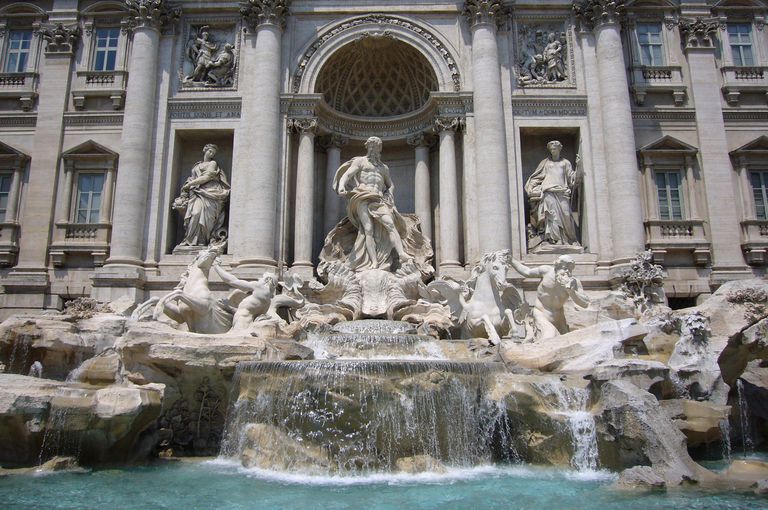A Short History of Music
Music is an art form. Even in the Stone Age people made music. The first music tried to imitate sounds and rhythms that occurred naturally. The first musical instrument used by humans was probably the voice.

Simply put, Music is the art of combining sounds beautifully. That is why it often affects our mood. The sounds produced by the human voice or the different instruments are represented through symbols called notes, which are written on a pentagram (a group of 5 parallel lines and 4 spaces.)
There are many kinds of musical works. A 'symphony' is a work for the orchestra, with no soloists playing. The classical symphony, by the way, was divided into 4 parts or movements. The 'concerto' is for the orchestra and a soloist. A work devided for 4 instruments is called a 'quartet'. A group of dances one after the other is known as a 'suite'. A 'Lied' (plural form Lieder) is a kind of song accompanied by piano and an 'opera' is a musical drama devised to be acted out and sung.

Broadly speaking, and according to the way the sound is produced, there are 3 families of musical instruments: string (the guitar, the violin), wind (the flute, the clarinet) and percussion (the drum, the cymbals). You may have heard of The Stradivarius, an Italian family living in the 18th C who made the best violins of their time. It is interesting to know that a piano (one of the most popular musical instruments) has over 200 strings -which you strike by playing the keys- and that an organ can have up to 4000 pipes.

Music in the Middle Ages (11th to first half of 14th C) was very much attached to the expansion of the Christian faith. Music plays an important role in the Church. In 590 AD Pope Gregory I is elected. The chants known as Gregorian Music (to be sung by priests and monks) are named after him. This kind of music was the fashion from the 9th to the 12th C. Also, troubadours travelled to different places playing their instruments and singing songs and poems before kings and aristocrats. Their favourite themes were love and battles. Polyphonic Music (which requires various voices and melodies) springs up in France in the 12th C.

Many changes took place during the Renaissance period (2nd half of 14th C to first half of 16th C.) There was a great interest in art in all its forms. Music flourished at the same time as the Middle Class emerged in society. Many rich people acted as patrons for artists. The invention of the printing press helped to spread music everywhere. Many 'Masses' (music for religious services) were composed during this period.

The Baroque style was predominant in the 17th C. Works of art were often complex, exaggerated and full of ornaments and decoration. Passion played an important part of this period. The opera and the oratorio began. Monteverdi (1567-1643) is a name to bear in mind. Vivaldi, Bach and Händel are the best-known composers of this period.

Opera began in Florence (Italy) at the end of the 16th C. A group of musicians known as the Camerata Fiorentina developed this new musical form, which joins dramatic action to the human voice and requires the participation of the orchestra, the choir and soloists. Monteverdi knew the works by the Camerata and went a step forward. He composed 'Orfeo', 'Arianna', 'Il ritorno d'Ulise in patria' and 'L'incoronazione di Poppea'. Opera spread through Europe. Composers Lully (France) and Purcell (England) are worth mentioning. The French composer Bizet composed the unforgettable 'Carmen', a story about a gypsy woman and a bull-fighter, set in Spain. But it was in Italy where in the 19th C. opera reached its peak and maturity.

The most popular opera composers were Italian and there were many theatres in Italy ready to stage their works. With time, the 'Teatro alla Scala' (Milan) has become the most famous opera house in the world.

The period known as 'Classicism' is historically set between Baroque and the Romantic era. The greatest composers of this period were Haydn and Mozart. Beethoven (1770-1827) linked this period with the Romantic era. In contrast with Baroque music, the works now were beautiful, simple and systematic. There was also a sense of proportion and balance. Musicians did not care for ornaments so much.